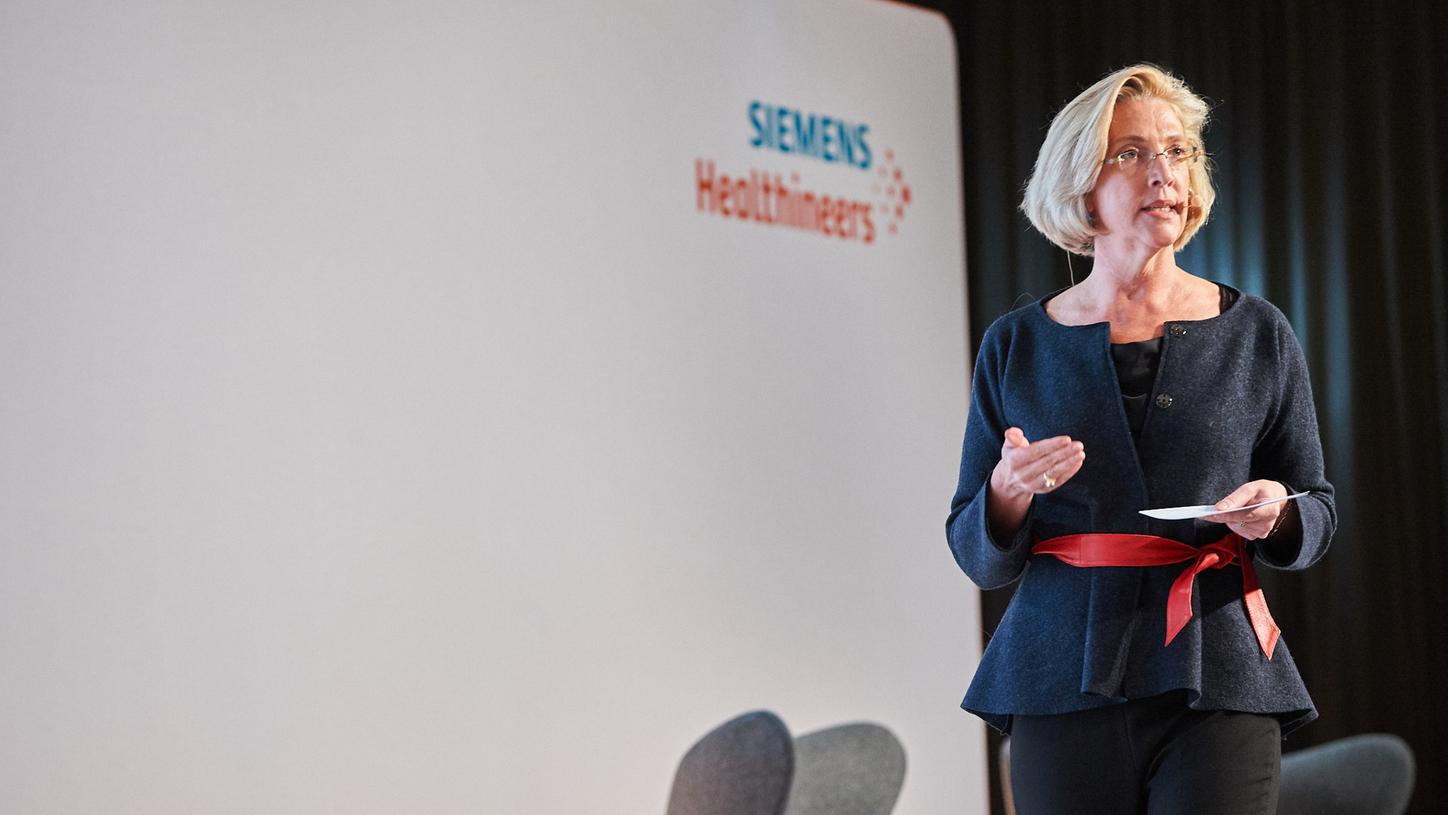Over 100 leaders from the global healthcare community met in Frankfurt, Germany, on October 9th to hear about the latest developments in the sector and debate their implications. The Siemens Healthineers Executive Summit featured sessions that focused on four key areas: Transforming care delivery, expanding precision medicine, digitalizing healthcare and delivering high-value care.
“Healthcare is about communication,” Bernd Montag, PhD, said in his introductory remarks. “Healthcare is about learning from each other. We have one target to reach together – high value care for this planet.”

Transforming care delivery
During the opening session on the transformation of healthcare delivery, participants heard about three experiences in the United States and one from India. The healthcare sector is emerging from a model dominated by addressing acute problems in centralized hospitals. Increasingly, decentralized locations are used to address more chronic problems, aided by improving technology. A new business model, called capitation, is emerging whereby providers are remunerated when they keep people healthy instead of for treating them when they get sick. Kaiser Permanente’s integrated system pioneered this approach. “If you are rewarded for performing procedures, that’s what you’ll get. If you are rewarded for keeping people healthy, that’s what you’ll get,” said John Mattison, MD, Kaiser Permanente’s Chief Health Information Officer.

Another company, Oak Street Health, relies heavily on “social determinants” (e.g., diet, clean water, stable housing, and the absence of violence) to steer care for its customers over the age of 65, said Griffin Myers, MD, its Chief Medical Officer. Oak Street receives a customer’s health insurance premium and assumes all “downstream costs,” Myers said. “If they need surgery, we pay the bill.” Myers, whose outfit is sometime referred to as Kaiser Permanente without hospitals, wants to keep people “happy, engaged, and out of the hospital,” as he put it. Randall Moore, MD, former President of Mercy Virtual, described his experience helping to shape the world’s first virtual healthcare center. Enabled by technology, Mercy improved patient outcomes while keeping people away from hospitals, thereby reducing costs. “Are we in the business of sickness care?”, he asked. “We have to be, but we also need to be in the business of health optimization.” In India, building on pilot projects in a few states, the government plans to provide healthcare for 500 million of underserved citizens. It will be driven, in large part, by 150,000 health centers that will focus on primary and preventative care, said Girdhar Gyani, PhD, Director General of the Association of Healthcare Providers in India.

Expanding precision medicine
The session on precision medicine featured ways to reduce unwarranted care variations. While each patient understandably thinks that his or her problem is unique, practitioners know that many issues can and should be dealt with in standardized ways. By reducing variation in care, practitioners can improve both outcomes and efficiency. Brent James, MD, former Chief Quality Officer at Intermountain Health, believes that two thirds of healthcare is wasteful. He advocates baseline protocols to ensure best-practice care as the default. He suggests that CEOs start with one or two areas and work up. Mike Modic, MD, agrees with that approach, but takes it a step further. And he uses business analogies: The first step, said the Senior Vice President of Population Health at Vanderbilt University, is to mimic manufacturing, with its standardization combined with quality control. Once that’s done, he draws lessons from retailing, suggesting the segmentation of populations so that they can be treated differently according to their medical and behavioral needs. Modic also believes that optimized and standardized electronic medical records can advance the process significantly.

Ari Robicsek, MD, Chief Medical Analytics Officer at Providence Health, provided what might be called a statistical view, looking at total knee replacements and how analytics can help surgeons reduce both variation in how they treat patients and cost, while maintaining or improving outcomes. Professor Matthew Cripps, National Director of Sustainable Healthcare from the UK’s National Health Service (NHS), outlined how he helped move a big bureaucracy to reduce variability and increase efficiency. Sometimes it seemed obvious: “We had upsurges in demand for 70 years during the winter,” he said. “Should we be surprised the 70th time? We talked to people who do surge management well [such as disaster relief units].” Cripps and his team began working with some of the worst performers in the NHS system – reducing unwarranted variation to save millions of pounds while improving outcomes for things such as stroke deaths. “There was a consensus about the underlying costs of unwarranted variation,” he said. “An overuse of acute care, and an underuse of primary and preventative care.”

AI and Cybersecurity
Dorin Comaniciu, PhD, Vice President of Artificial Intelligence at Siemens Healthineers, stole much of the show with his keynote speech called “Meet Your Digital Twin”. Using a model of his own heart, he showed how AI can help practitioners test potential treatments and interventions on a virtual copy of the organ in question, before proceeding. And it isn’t just about coronary disease, as Comaniciu demonstrated with examples from orthopedics and knee replacements. “The focus needs to be on doing what is right for the patient,” he said. “We need to eliminate unnecessary interventions, prioritize better healthcare, and advance precision medicine.”

The session on digitalization provided insights on how to increase cybersecurity. Daniel Nigrin, MD, Senior Vice President of Information Services and Chief Information Officer at the Boston Children’s Hospital, and Dr. Nicolas Krämer, CEO of Lukaskrankenhaus Neuss, recounted how their companies had been hacked. Dr. Sandro Gaycken, founder and Director of the Digital Society Institute, and Melissa Hathaway, President of Hathaway Global Strategies, provided expert analysis. Institutions should take every precaution and deploy best practices. Digital technologies hold the potential to improve healthcare in countless ways. But they bring new vulnerabilities. Cyber-attacks may impair operations and create financial damage.

Delivering high-value care
To close the day, two global leaders provided insights into how they run their healthcare businesses. Peter Pisters, MD, MHCM, President of the University of Texas MD Anderson Cancer Center, described his institution’s unceasing drive to combat cancer. Toby Cosgrove, MD, Executive Advisor and former CEO and president of the Cleveland Clinic, told the story of how he led the transformation of that institution to make it more patient-friendly while improving efficiency. Cosgrove talked about taking people out of their specialist silos to form teams to meet the needs of patients, to make a “change from doctor-centric to patient-centric.” The road was tough, he said, but now nobody says we should go back.” In his closing remarks, Montag summed things up by saying, “The world has changed a lot in the last 20 years.” In the 1990s, companies such as Siemens Healthineers aimed to keep radiologists happy. Now the goal is “to deliver high-value care with efficiency at a low cost.”
Conclusion
The four panels addressed the main trends and many of the biggest challenges and opportunities in today’s healthcare market. These include new business models, sometimes borrowing ideas from other industries. They also include expanding precision medicine, transforming care delivery, improving the patient experience, and digitalizing healthcare.
Takeaways
- A new business model, called capitation, encourages practitioners to keep people healthy instead of treating them when they get sick.
- The standardized use of best practices can help featured reduce unwarranted care variations.
- Data can be used to improve individualized care.
- Digital models can help doctors test treatments beforehand.
- Cybersecurity needs to become a priority.
- Institutional reform can help transform hospitals from doctor-centric to patient-centric.
- In the 21st century, the goal is to deliver high-value care with efficiency at a low cost.





